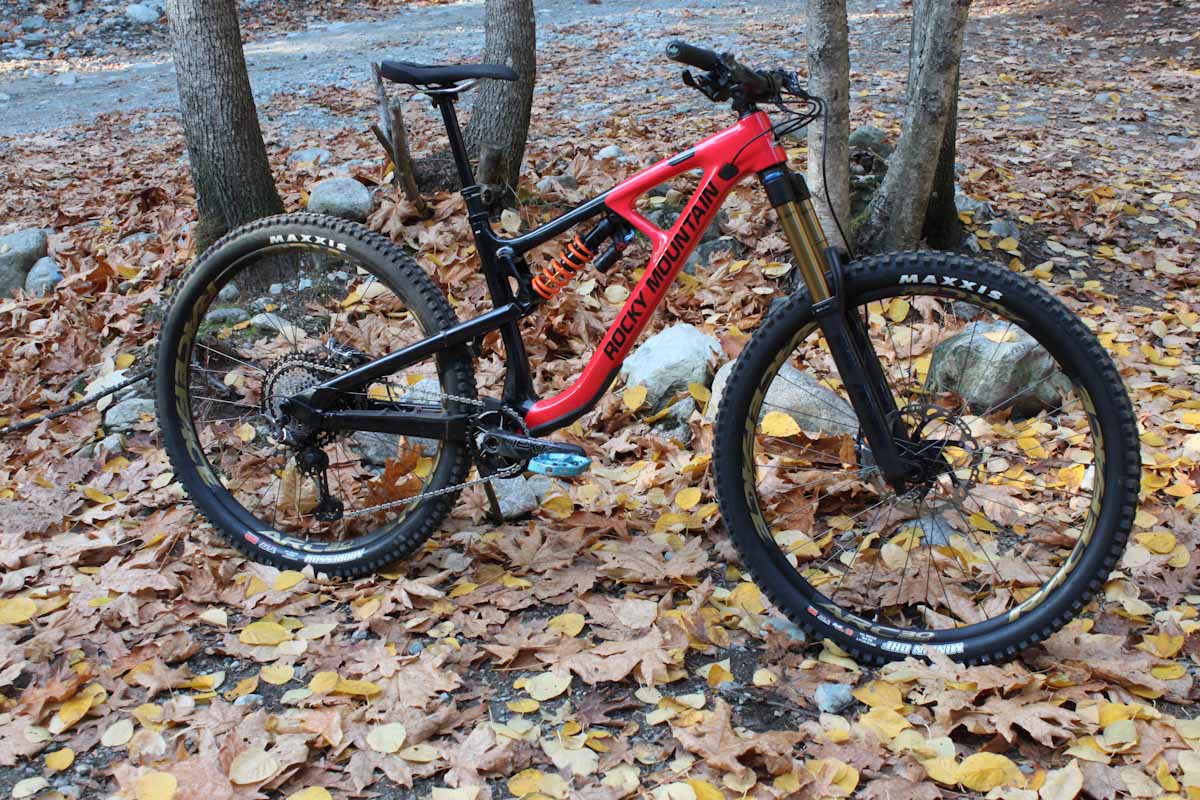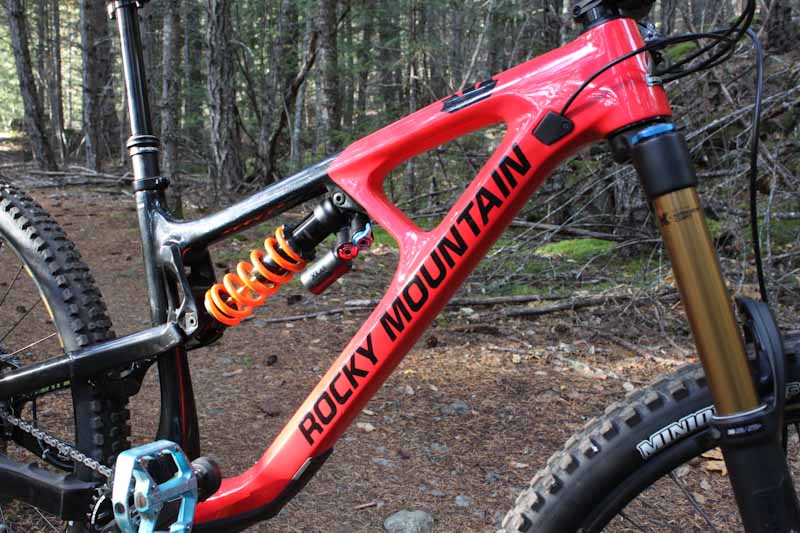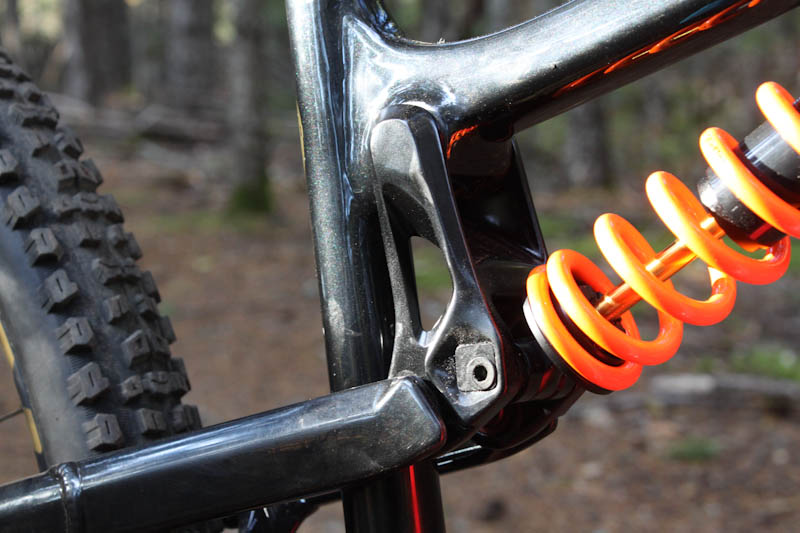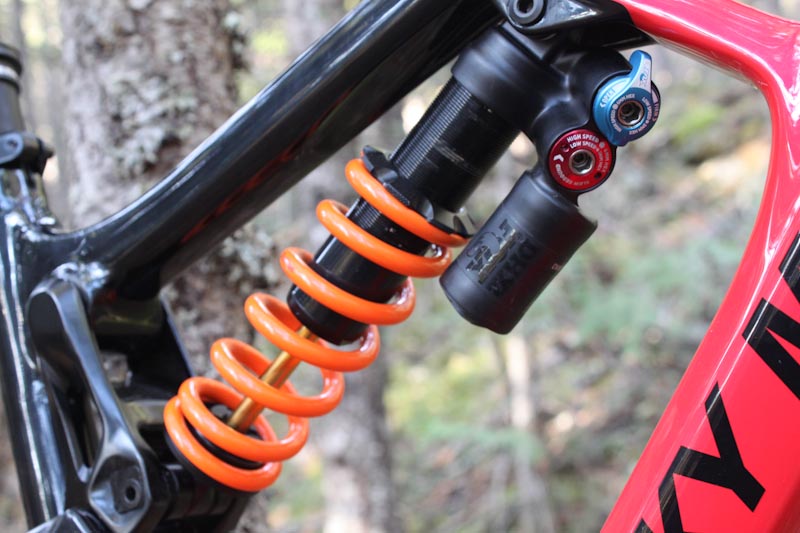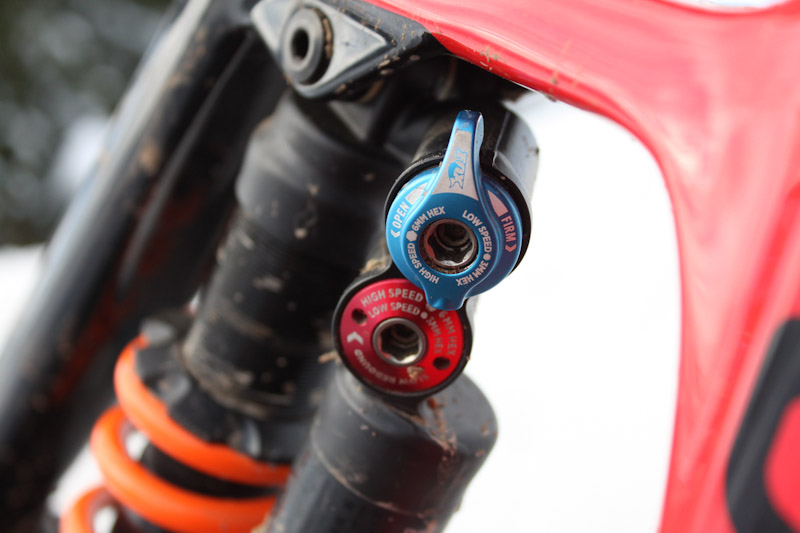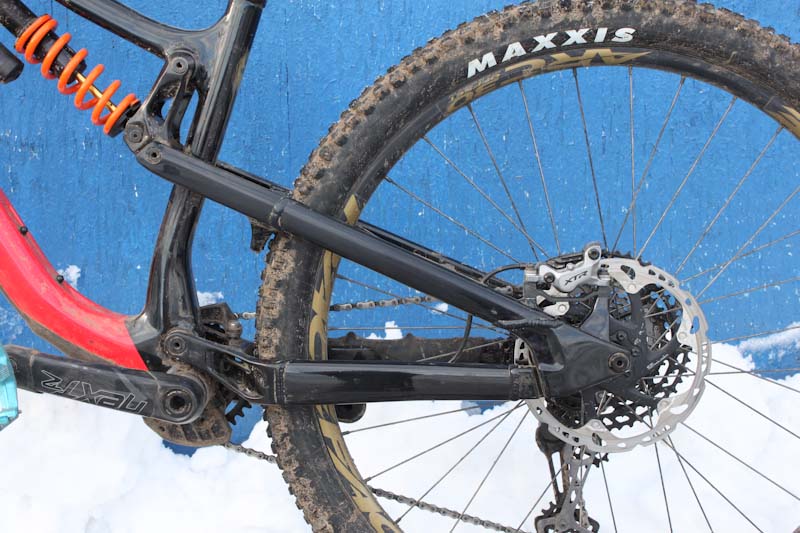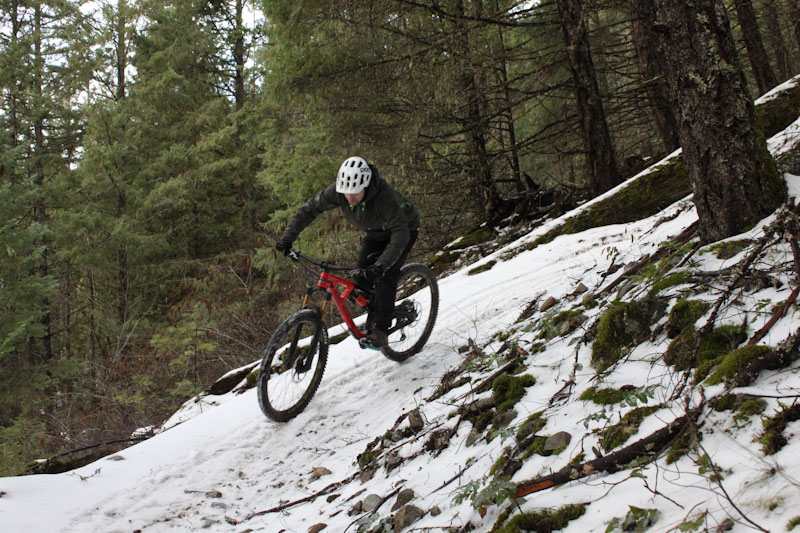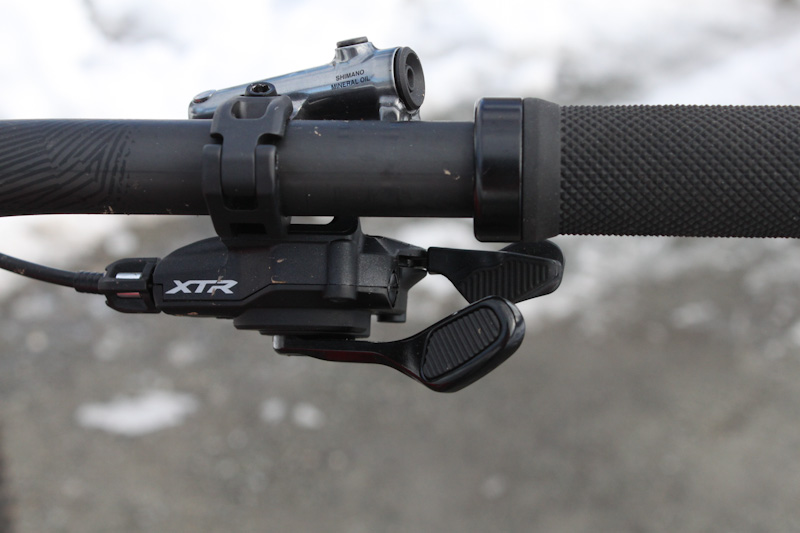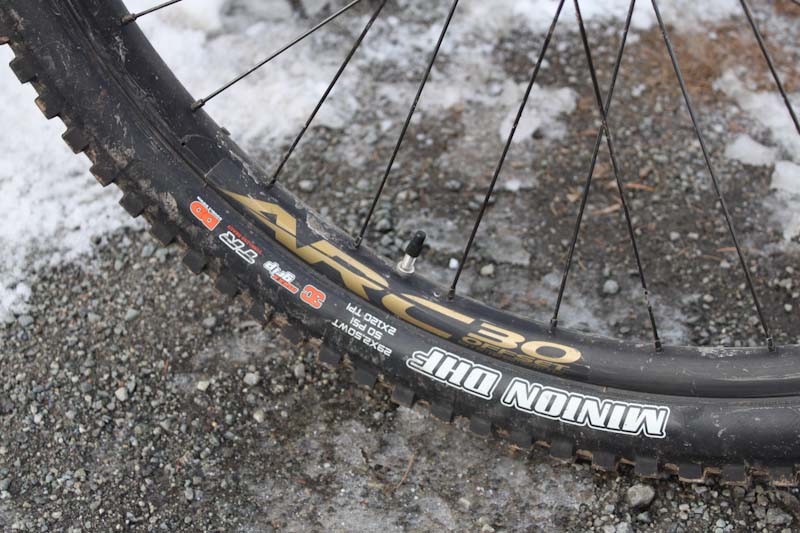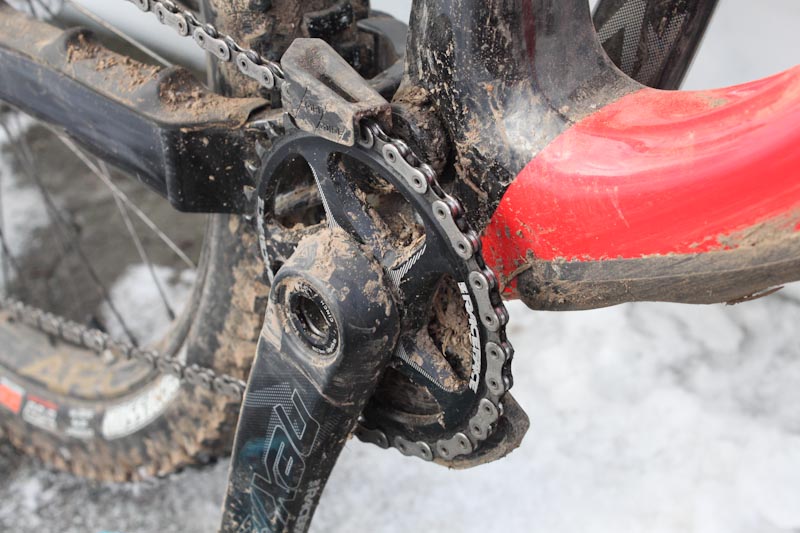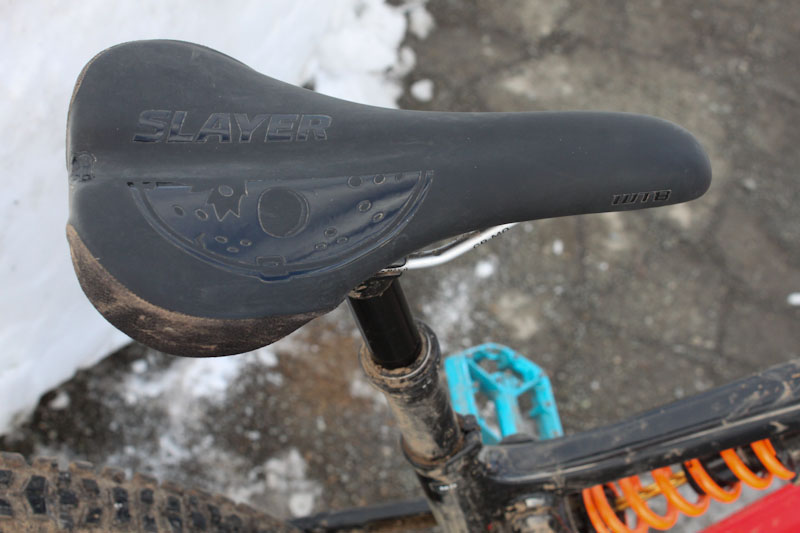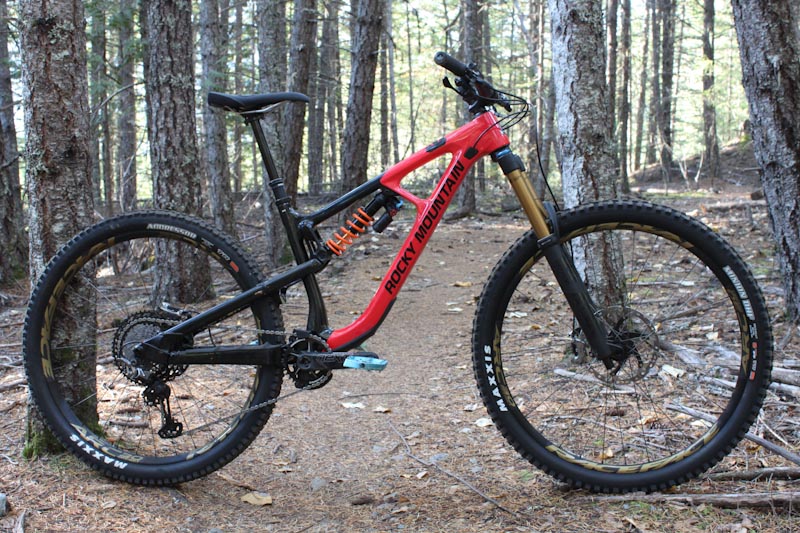Earlier this summer, I got to join Rocky Mountain for the 2020 Slayer launch in North Vancouver. At the launch we got a taste of what the Slayer can do on highly technical descents, but didn’t do much climbing with the new bikes. With 29” wheels and 170mm of front and rear travel, it’s no surprise the Slayer manhandled the North Shore’s gnarly downhills.
So with the ‘downhill performance’ box checked, I spent my longer-term test seeing how well the Slayer performs as an enduro bike. Since most consumers are probably going to pedal their bikes around, I’ve been looping my local trails on the Slayer Carbon 90 29” since early October.
Despite its beefy frame, slack head tube and generous travel, the Slayer climbs impressively well. Rocky Mountain’s Smoothlink suspension hasn’t lost much efficiency with all that squish, and thanks in part to its sensitive coil shock, the bike offers great rear wheel traction. Also, while the Slayer is a tough looking beast, the carbon-framed models weigh in within reason for an enduro bike.
2020 Rocky Mountain Slayer 29″ geometry:
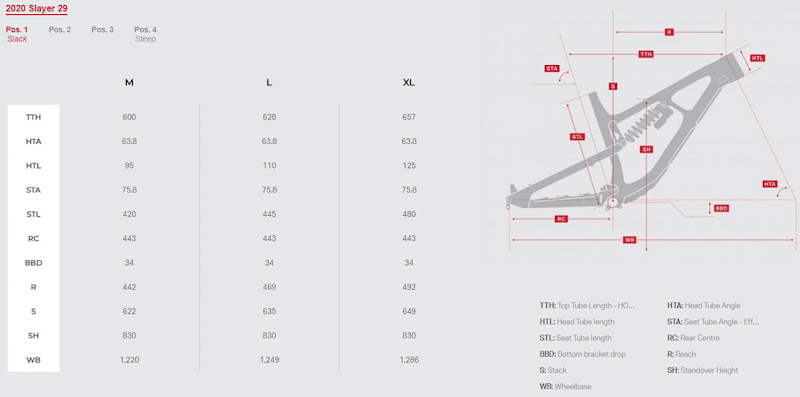
As I usually would, I rode a medium Slayer. Rocky Mountain’s geometry follows current trends and doesn’t go to extremes; the Slayer has a pretty slack head angle, but overall the frame’s dimensions and angles are in line with most current bikes. The geometry can also be adjusted to suit your tastes…
RMB’s Ride 4 chip provides four different shock mount positions that alter the Slayer’s angles, measurements and shock rate. I mostly rode this bike in its two extremes, Pos. 1 and Pos. 4, but I can attest that toying with all the settings will help you fine-tune your ride, and each increment makes a difference.
In its steepest mode (Pos. 4) the Slayer has a 64.8° head tube angle, a 76.8° seat tube, and a 453mm reach. The chainstays measure up at 441mm and the BB drop is 18mm. In the slackest setting (Pos. 1), the head tube and seat mast angles slack back by one degree to 63.8° and 75.8°, and its reach comes down to 442mm. The rear end grows slightly to 443mm, and the BB drop increases to 34mm.
Suspension:
The top-tier Slayer gets a Fox suspension package; out back is a DHX2 Factory coil shock which offers two positions (open and firm), plus high and low speed compression and rebound adjustments. My medium Slayer came with a 400lb SLS spring. Up front is Fox’s 36 Float EVOL GRIP2 Factory fork, providing 170mm’s of travel.
I’ve ridden a few bikes with Rocky Mountain’s Smoothlink four-bar linkage now, and find it to be a well-balanced design. The linkage keeps the rear wheel highly active, so I do like having multi-position shocks on these bikes to boost pedalling efficiency on smoother trails or fire roads. That active rear wheel provides good traction on climbs and capably handles fast descents over rough or chattery terrain. One thing I like about RMB’s linkage is the poppy feel it provides; even the big 170mm Slayer was a treat to jump or pop off roots.
Ride Impressions:
 After many rides on my home trails, I took the Slayer Carbon 90 down to Squamish, B.C. for a double lap to make notes on how the bike rides in its steepest and slackest modes. My route of choice was to climb up some moderately technical singletrack, then come down a descent that offers a mix of speedy sections, rough roots and rocks, and a few jumps.
After many rides on my home trails, I took the Slayer Carbon 90 down to Squamish, B.C. for a double lap to make notes on how the bike rides in its steepest and slackest modes. My route of choice was to climb up some moderately technical singletrack, then come down a descent that offers a mix of speedy sections, rough roots and rocks, and a few jumps.
On lap one I rode the Slayer in its steepest position (Pos. 4). In this mode, the seat angle is very steep so it’s easy to put power down on the pedals. The Slayer’s front end is long enough to keep your weight well balanced and your front wheel planted as you clamber up almost anything… However, on really steep uphill punches the bike’s lengthy wheelbase and slack head tube angle become noticeable. It’s hardly punishing to get the Slayer up steep sections, it’s just not as sprightly as a smaller enduro or trail bike would be. In position 4 the Slayer feels a lot like a typical current enduro bike, albeit a slack one.
I began my climb with the rear shock in Firm mode. With all the settings (low and high speed compression and rebound) within a few clicks of factory recommendations, I found the Firm mode provided a good pedalling platform, yet it still moves freely enough to suck up bumps and provide good traction over moderately technical terrain. I also noticed the coil shock smoothed out smaller vibrations very nicely.
Halfway up the climb I added five clicks to stiffen up the low speed compression and see how efficiently I could make the Slayer climb. The increase produced an impressive amount of pedalling support, and only sacrificed a bit of bump absorption on bigger hits. With the Slayer Carbon 90’s DHX2 rear shock, jacking up the low speed compression will make the bike pedal better without losing too much traction or comfort, even on singletrack trails.
In Open mode the rear shock definitely provides less pedalling support and bobs deeper into its travel, so in most cases I’d expect riders to use Firm mode while climbing the Slayer. Open mode still could be useful on highly technical ascents, as the Slayer’s Smoothlink linkage does keep pedalling efficiency in check.
On lap one I descended in steep mode (Pos. 4) with the shock wide open and all settings close to factory recommendations. In this position the rear end’s compression was light enough that I could take full advantage of the Slayer’s generous travel under an impact, yet the linkage kept it from wallowing into hard corners and preserved RMB’s poppy ride quality. The rear end also felt very reactive to high-speed chatter, providing excellent traction over the rough stuff. Even in its shorter mode, the Slayer is still a big bike so it felt very stable at high speeds.
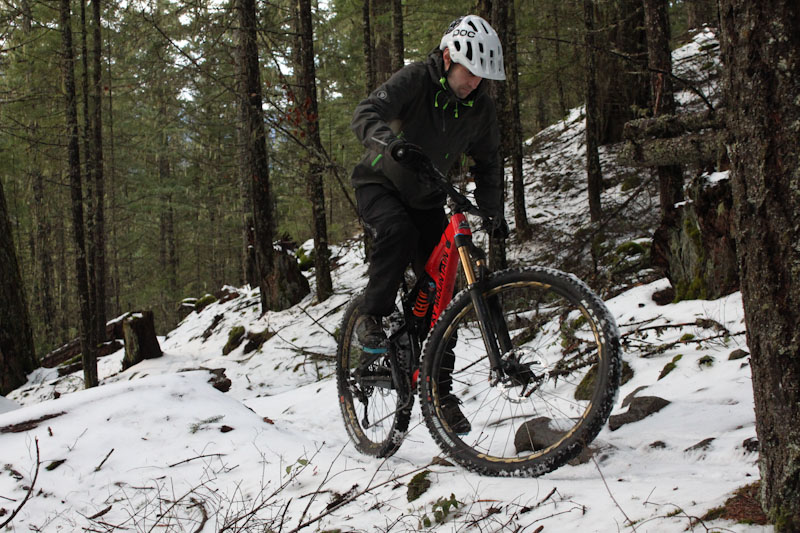
For lap two, I put the Slayer in Slack mode (Pos. 1) for a back-to-back comparison and did notice a difference right away. It’s nothing huge, but slacking the seat angle by one degree and shortening the reach by quite a bit shifted my weight rearward. The slacker head angle didn’t affect steering agility much, but keeping weight on the front wheel became a bit more difficult on those steep uphill bursts.
On this lap I put the rear shock back to near-factory recommendations to see how the Slayer climbed in a more downhill-friendly mode. While the difference in geometry was apparent, flipping the Ride 4 chip doesn’t make the shock feel much different on the way up. The bike still climbs pretty well (in Firm mode) and I only noticed better big bump absorption and a softer overall ride after reducing the low speed compression. Even in Slack mode with the BB slung low, I seemed to get away without many pedal strikes as I climbed.
Now, the most fun part: descending with the Slayer in slack mode! Since the bike’s steepest setting is already quite slack, you don’t notice a big difference in the head angle switching between chip positions. The reduced reach definitely allows you to hang off the back of the bike more easily, and the lengthened wheelbase makes for a super stable feeling ride.
I did notice the shock ramps up more as you near the bottom-out point, and the slackened Slayer provided a more supportive feel from mid-stroke and beyond. This helped offer a bit of extra pop off jumps and more of that launching-out feel as you decompress exiting corners. It definitely took a harder hit for me to fully compress the shock versus lap one in in Pos. 1, which felt more linear.
29” wheels and 170mm of travel are obviously two key aspects of the Slayer’s ability to devour rough terrain, but rest assured RMB’s well-rounded linkage works well with all that squish, and the bike’s modern geometry makes it more than just a pedal-friendly downhill destroyer.
Components:
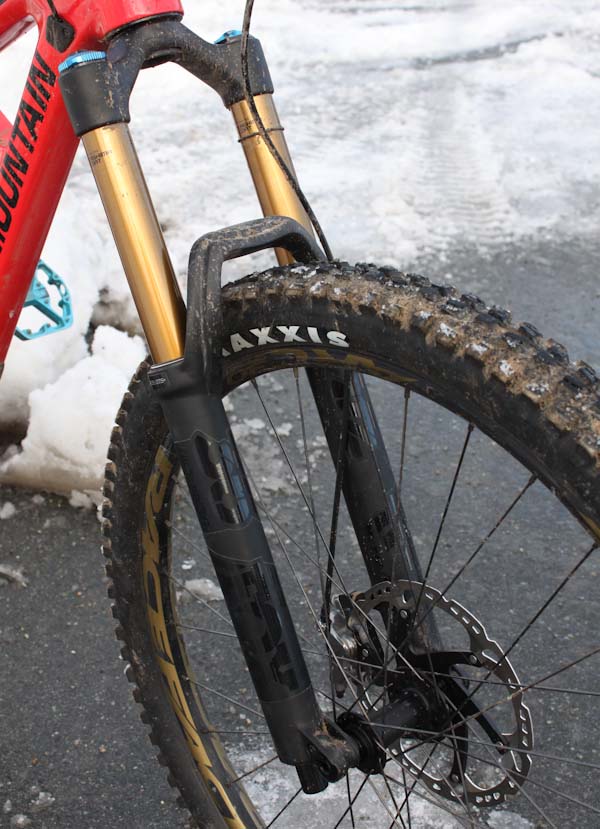 I was given the top-end Slayer Carbon 90 to ride this time, so I had high hopes the components wouldn’t let me down. Spoiler alert – I have little to complain about.
I was given the top-end Slayer Carbon 90 to ride this time, so I had high hopes the components wouldn’t let me down. Spoiler alert – I have little to complain about.
The Fox 36 Float EVOL GRIP2 Factory fork offered plush, smooth action, and a stiff chassis. Between its volume spacers and high/low speed compression and rebound adjustments, even the most discerning riders should be able to fine-tune this fork to suit their riding style. Once dialed in, the fork is as smooth and sensitive as any air-sprung telescoping fork I’ve ridden.
The Slayer’s XTR Trail brakes rekindled my love for Shimano stoppers. Four piston calipers, 203mm Ice Tech rotors and finned brake pads reeled in this big bike easily, and I love the shape and feel of Shimano’s levers. SRAM still has a more gradual bite, but I don’t find the XTR’s difficult to modulate.
That said, I am not a fan of Shimano shifters; I find SRAM’s far more comfortable and ergonomic. Personally, I don’t like Shimano’s release paddle (Being used to SRAM stuff, I use my thumb for both paddles). It sits further up under the bar than SRAM’s, and SRAM’s paddle has a much more comfortable shape. I have no qualms with Shimano’s shifting performance; the XTR components nailed every shift quickly and precisely.
Race Face’s Arc 30 wheels have proven durable as neither rim has any kind of warp, and no dings or dents to speak of. I still think carbon wheels would be nice on a bike in this price range, but at least the Slayer Carbon 90 comes with carbon cranks and handlebars. RMB wisely fit the Slayer with 29×2.5” Maxxis Double Down tires, pairing a Minion DHF Maxx Grip 3C with an Aggressor in the rear.
I had no issues with the Race Face Next R Cinch cranks, and haven’t yet heard any creaks from the BB92 press-fit bottom bracket. A 32t ring up front was small enough to get me up any climb in my area, and we have some steep ones! A One-Up Components ISCG-mounted lower bash guard was a nice inclusion, and RMB’s Spirit Guide is there to keep your chain in place. I did discover one issue with the Spirit Guide; when riding in sloppy conditions, gunk can build up in the top opening and it will stay there until you dig it out with a small tool.
The 150mm Race Face Turbine dropper post worked without fail (even through early winter conditions), and drops with very little pressure. A WTB Volt saddle comes with custom Slayer graphics, and I found it comfortable enough that I’d keep it on the bike.
While some might call the Slayer a freeride bike, today’s tech and geometry has made it a much better balanced machine that bridges the enduro/freeride categories. At a listed 33lbs (without pedals) the Carbon 90 29er is no heavier than many other enduro bikes, but if you’re looking down the lineup beware; the aluminum models are not light. All that travel hasn’t changed the Smoothlink linkage’s ride qualities, and every Slayer comes with a two-position rear shock so you can firm up the pedalling support for climbing.
With the Ride 4 chip and the adjustability of the Carbon 90 model’s DHX2 rear shock, you can tune this bike to do what it needs, whether you’re planning on climbing it every ride or shredding your local bike park. It is a bit on the long travel side to be a ‘quiver killer’, but this bike is more capable all around than it might look. One thing is for sure – The Slayer’s DH-level bump eating capability will make you smile when you’re plowing down rough trails.
The Slayer Carbon 90 29” retails for $7999. Color options are red/black or grey/black, and it is available in M/L/XL sizes.
